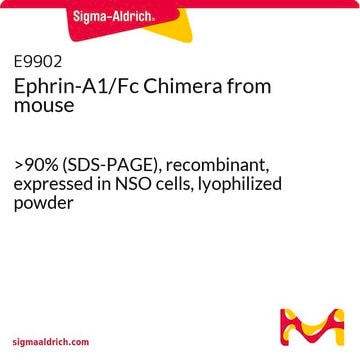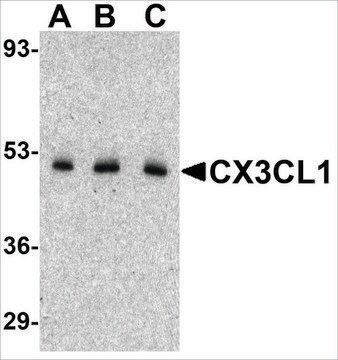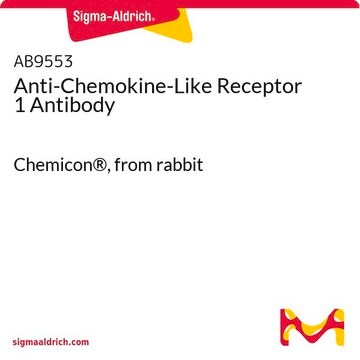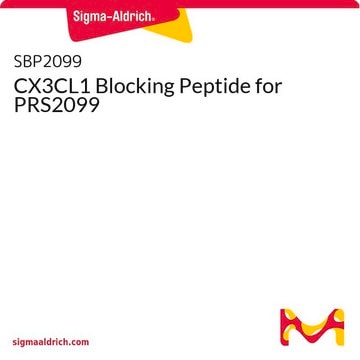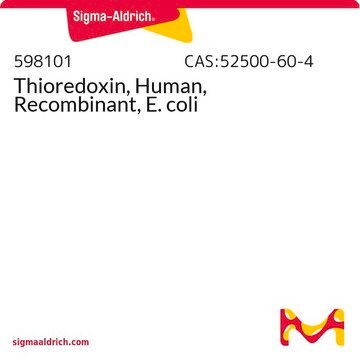F2302
Fractalkine Peptide
>97% (SDS-PAGE), lyophilized powder, mouse recombinant, expressed in E. coli
Sinônimo(s):
CX3CL-1, Neurotactin
About This Item
Produtos recomendados
Nome do produto
Fractalkine, Chemokine Domain from mouse, >97% (SDS-PAGE), recombinant, expressed in E. coli, lyophilized powder
fonte biológica
mouse
Nível de qualidade
recombinante
expressed in E. coli
Ensaio
>97% (SDS-PAGE)
Formulário
lyophilized powder
potência
0.3-3 μg/mL
peso molecular
calculated mol wt ~9.5 kDa
embalagem
pkg of 25 μg
condição de armazenamento
avoid repeated freeze/thaw cycles
Impurezas
endotoxin, tested
nº de adesão UniProt
temperatura de armazenamento
−20°C
Informações sobre genes
mouse ... Cx3cl1(20312)
Descrição geral
Ações bioquímicas/fisiológicas
forma física
Nota de análise
Palavra indicadora
Danger
Frases de perigo
Declarações de precaução
Classificações de perigo
Eye Dam. 1 - Skin Irrit. 2
Código de classe de armazenamento
11 - Combustible Solids
Classe de risco de água (WGK)
WGK 3
Ponto de fulgor (°F)
Not applicable
Ponto de fulgor (°C)
Not applicable
Escolha uma das versões mais recentes:
Já possui este produto?
Encontre a documentação dos produtos que você adquiriu recentemente na biblioteca de documentos.
Nossa equipe de cientistas tem experiência em todas as áreas de pesquisa, incluindo Life Sciences, ciência de materiais, síntese química, cromatografia, química analítica e muitas outras.
Entre em contato com a assistência técnica